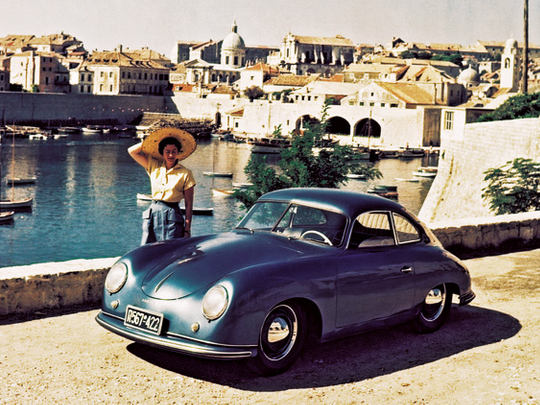
In 1948 a German engineer by the name of Ferdinand Porsche launched the 356. Known to his friends as “Ferry”, the son of Dr Ing Ferdinand Porsche (the founder of the famous marque) was keen to create a sporty model for the fledgling company.
Using Volkswagen’s popular Beetle chassis, Ferry replaced the body with a smoother, racy exterior, designed by Erwin Komenda. The engine and suspension were also derived from the Beetle, pushing out just 40bhp.
Unbeknown to Ferry, the 356 would go on to be one of the most recognisable classic sportscars in history and would eventually give birth to the iconic 911 range.
Despite its glittering history, the car’s launch went by almost unnoticed and only a few models were sold, mainly in Germany and Austria. Just 50 examples would leave the factory over the first two years. But the 356’s popularity then started to gain momentum, selling on both sides of the Atlantic, due to its sporty handling and typically German build quality.
The 356 was also successful on the track, gaining glory at Le Mans, the Mille Miglia and the infamous Carrera Panamericana. Porsche would later celebrate that race by adopting the Carrera name on its 911s.
Over the years, the tiny four-cylinder engine would grow from 1.1 litres and 40bhp to a 130bhp 2.0-litre motor. However, the original flat-four layout would remain throughout its life.
Unlike many other manufacturers, Porsche built a cabrio version from day one, running alongside coupé production. Soft-top sales often accounted for 50 per cent of sales, especially in the US.
The company produced a few special versions of the 356, including the 356 Carrera, which boasted a special race-tuned engine. The company also built a Super 90 and a Speedster model, which are now extremely rare and much sought after by enthusiasts. The Speedster was built following a suggestion by the US importer that a stripped-out version with a cut-down windscreen would sell well on the west coast.
Such was the popularity of the 356 that it ran alongside its 911 replacement for more than a year. By the time production ended in 1965 more than 76,000 had rolled out of the factory. It is thought that around half of these cars still exist today, with fully restored cars fetching up to an incredible $100,000 (Dh367,000) at auction. Not bad for a car that cost $4,000 when new.
Despite having a tiny engine and a simple layout, the 356 directly brought about one of the world’s most loved sportscars. So the next time you see a 911 GT3 winning its class at Le Mans, just remember it all started with the humble 356.










